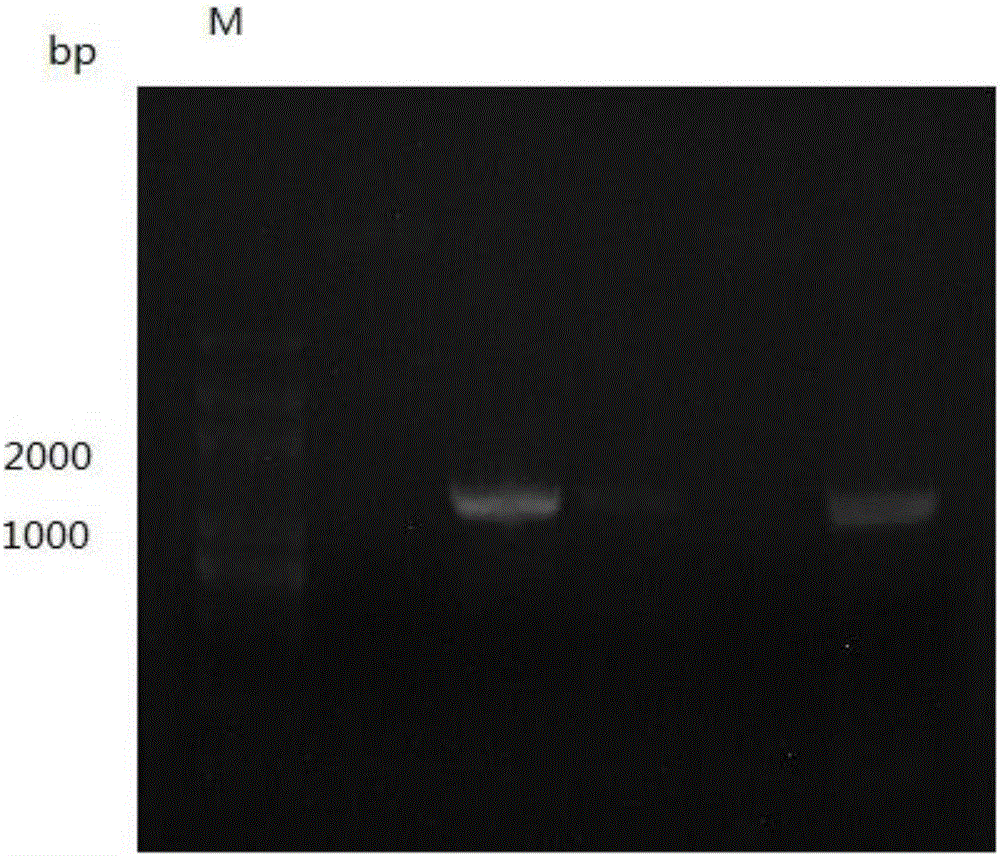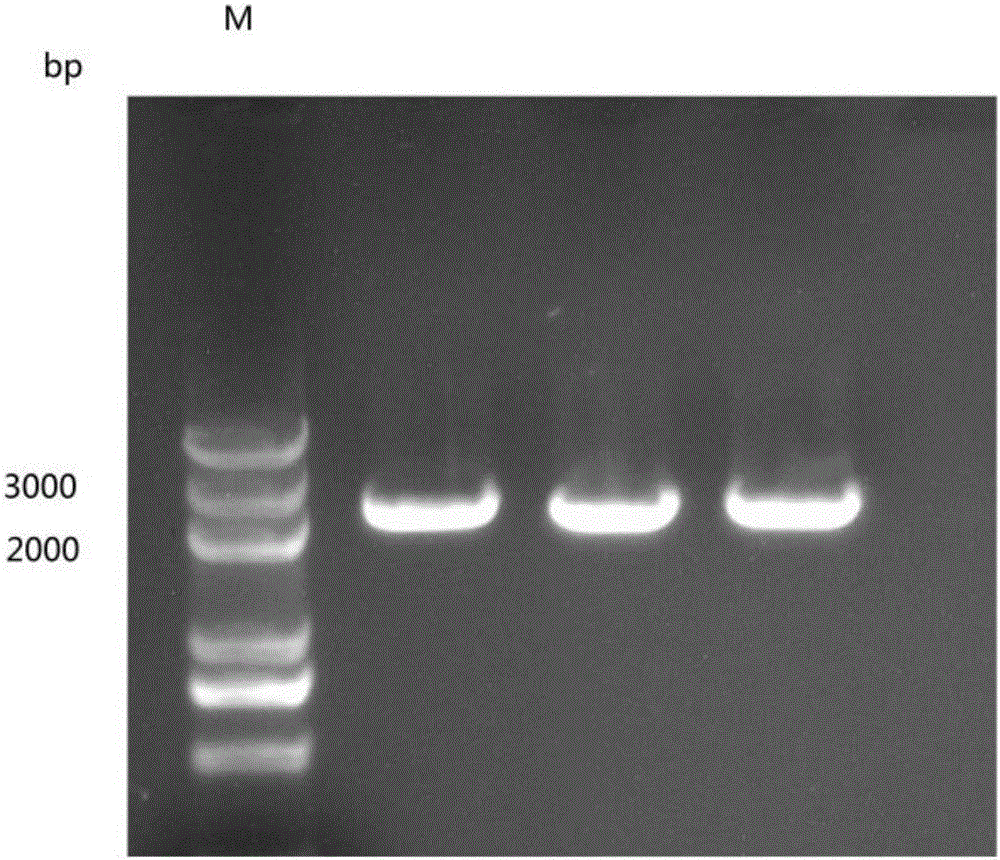Engineering bacterium capable of co-producing long-chain dicarboxylic acid and 1,3-propylene glycol and building method thereof
A technology of propanediol dehydrogenase and Clostridium butyricum, applied in the field of bioengineering, can solve the problems of simultaneous production without fermentation
- Summary
- Abstract
- Description
- Claims
- Application Information
AI Technical Summary
Problems solved by technology
Method used
Image
Examples
Embodiment 1
[0152] A method for preparing a recombinant plasmid, comprising the steps of:
[0153] (1) Using the genome of Candida tropicalis as a template, carry out PCR amplification to obtain the promoter pGAPg fragment, and the electrophoresis results are as follows: figure 1 shown;
[0154] The primer nucleotide sequence of described PCR amplification is as follows:
[0155] pGAPg-up:5'- AGATCT AAGAAGAATTTAGTGGTTAGTCG-3',
[0156] pGAPg --down:5'-ATCCTTACTTATCATTGTTAAAATTTAATTTGTAAGTGATTTG-3';
[0157] The single underline is the enzyme cutting site Bgl II;
[0158] The amplification system of the PCR amplification is as follows, the total volume of the system is 50 μl:
[0159] 2×HiFi-PCR Master 25μl, 10μmol / L upstream primer 2μl, 10μmol / L downstream primer 2μl, template 2.5μl, use ddH 2 O supplemented to 50 μl;
[0160] The amplification procedure of described PCR amplification is as follows:
[0161] Pre-denaturation at 95°C for 5 min; denaturation at 95°C for 30 sec, ann...
Embodiment 2
[0282] A preparation method for transforming oil and co-producing long-chain dibasic acid and 1,3-propanediol Candida tropicalis engineering bacteria, comprising the following steps:
[0283] (i) preparing Candida tropicalis competent cells;
[0284] The preparation of described Candida tropicalis competent cell can adopt the conventional technique in this field, also can follow the steps as follows:
[0285] ① Inoculate Candida tropicalis on a YPD solid medium plate, culture at 30°C overnight, inoculate a single colony on the plate into 25ml of YPD liquid medium, and culture in a shaker at 30°C and 220rpm / min for 20 hours to obtain a seed solution ;
[0286] ② Take 0.5ml of the above seed solution and inoculate it into 25ml of YPD liquid medium, and culture it on a shaker at 220rpm / min at 30°C for 8h, so that the OD 600 Between 1.3 and 1.5, the expanded culture medium was prepared;
[0287] ③ Take 1ml of expanded culture medium into a 1.5ml EP tube, centrifuge at 3000rpm f...
Embodiment 3
[0297] Example 3 Construction and Fermentation Verification of Candida Tropicale Engineering Bacteria
[0298] The Candida tropicalis engineering bacterium constructed and obtained in Example 2 was inoculated in YPD medium, and the culture condition was 30° C. shaker for 12 hours, and then transferred to the Candida tropicalis fermentation medium at a ratio of 10% by volume, at 30 ℃ shaking table fermentation verification.
[0299] The YPD medium components are as follows:
[0300] Peptone 20g, glucose 20g, sodium chloride 10g, water to 1L.
[0301] The fermentation medium components are as follows:
[0302] Glucose 62g, ammonium sulfate 1g, yeast powder 2g, vitamin B1 0.2g, sodium chloride 2g, potassium dihydrogen phosphate 8g, disodium hydrogen phosphate 10g, urea 3g, magnesium sulfate 6g, water to 1L.
[0303] The yield of long-chain dibasic acid after fermentation by Candida tropicalis engineered bacteria was 10g / L, and the yield of 1,3-propanediol produced by convertin...
PUM
 Login to View More
Login to View More Abstract
Description
Claims
Application Information
 Login to View More
Login to View More - R&D
- Intellectual Property
- Life Sciences
- Materials
- Tech Scout
- Unparalleled Data Quality
- Higher Quality Content
- 60% Fewer Hallucinations
Browse by: Latest US Patents, China's latest patents, Technical Efficacy Thesaurus, Application Domain, Technology Topic, Popular Technical Reports.
© 2025 PatSnap. All rights reserved.Legal|Privacy policy|Modern Slavery Act Transparency Statement|Sitemap|About US| Contact US: help@patsnap.com



